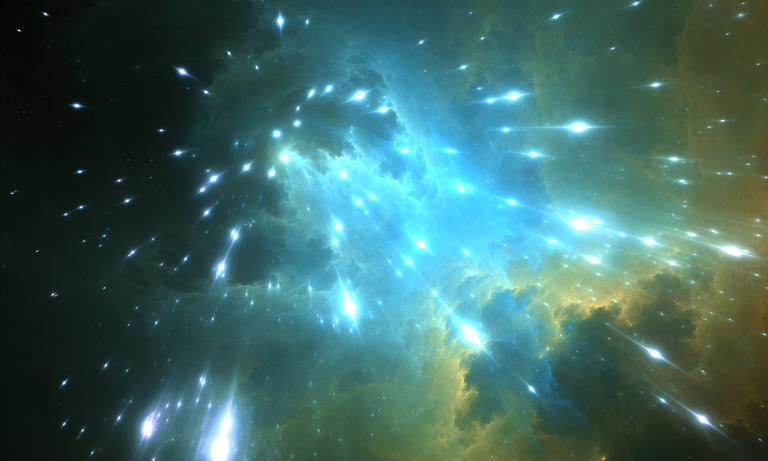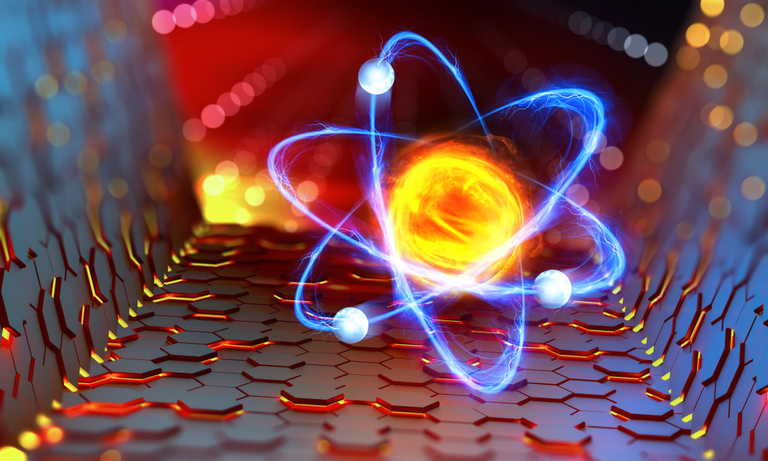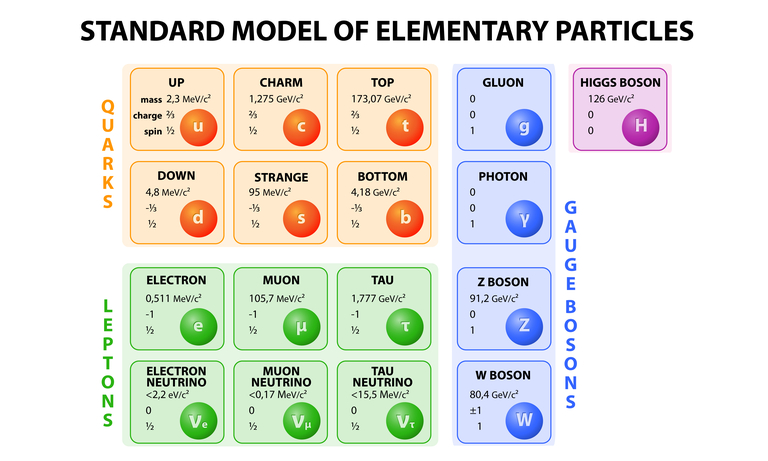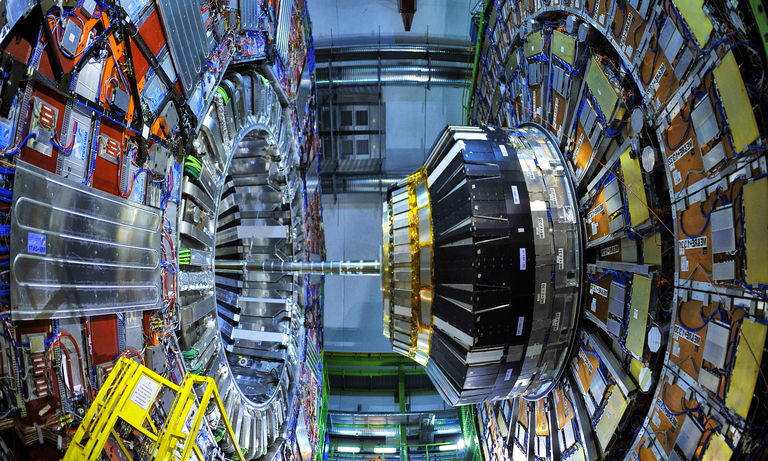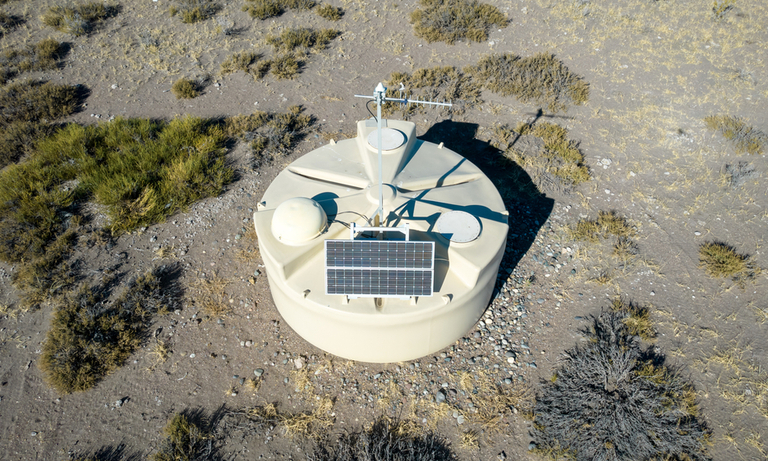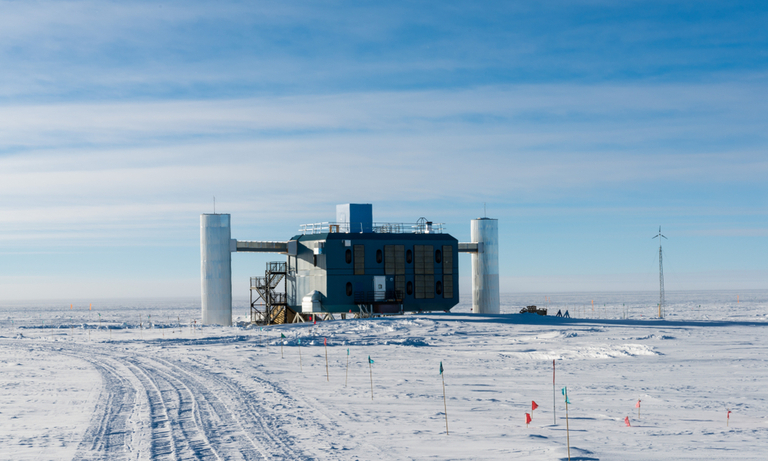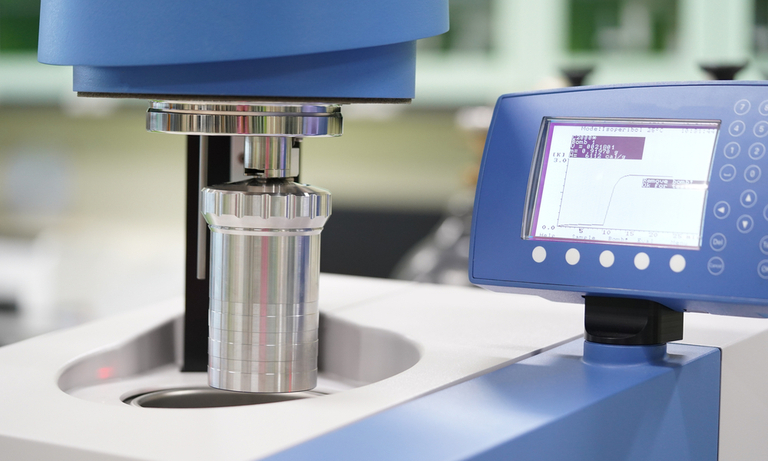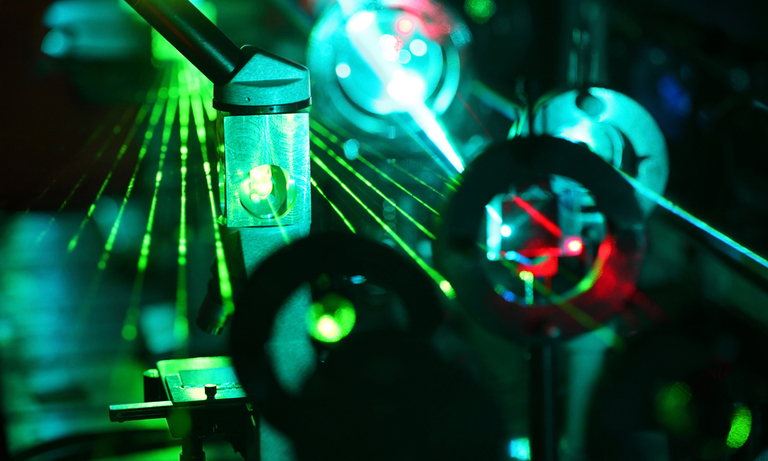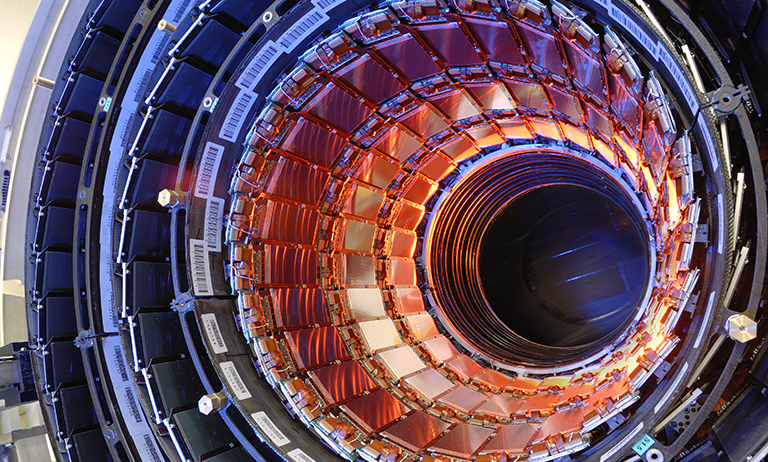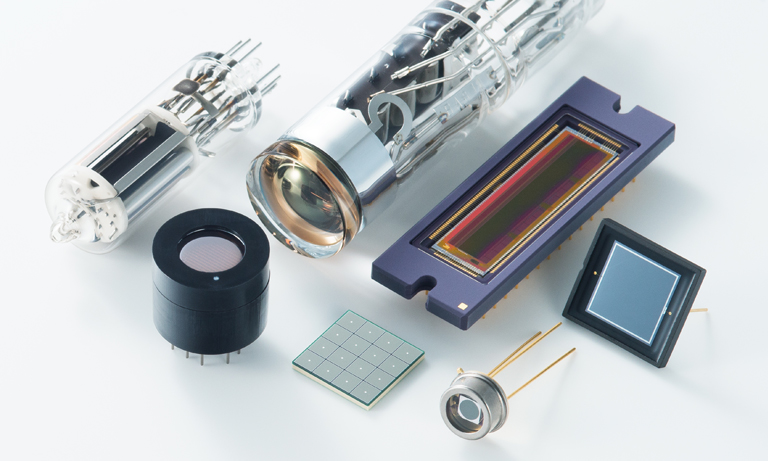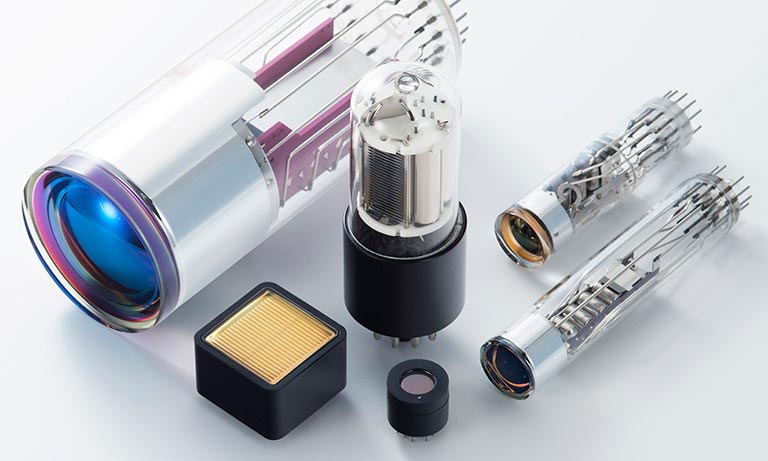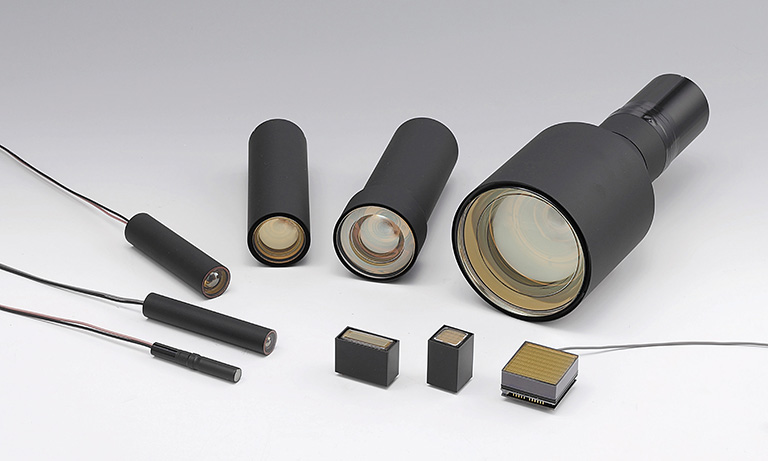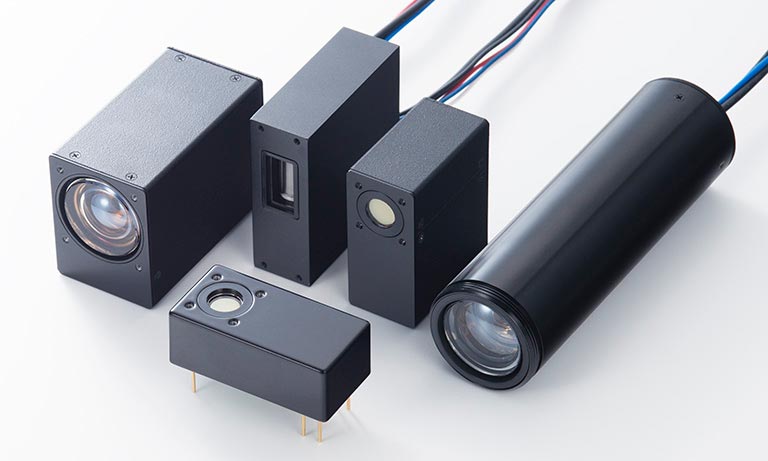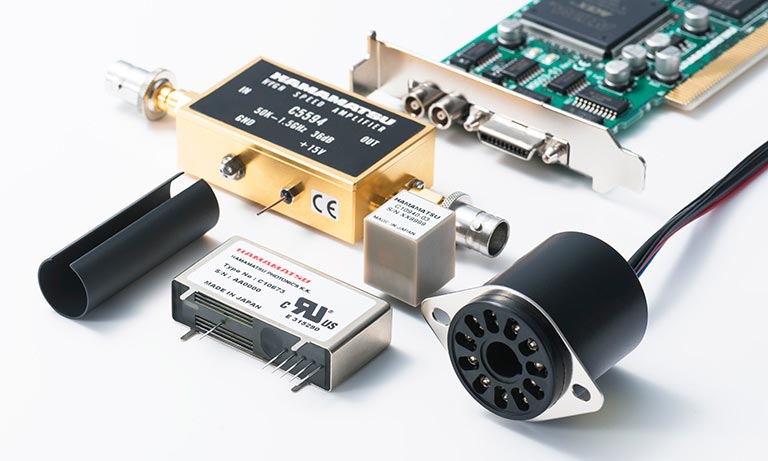Home
Products
Physics Research Field
Type of Experiment
Detector Type
Behind the Science
Tech in a Nutshell
United Kingdom (EN)
Select your region or country.


XENONnT: Scaling up chances for discovery
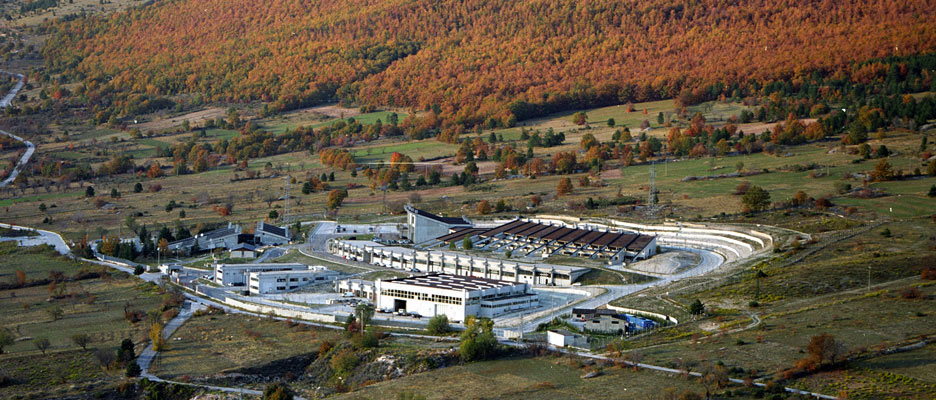
Courtesy of INFN Gran Sasso National Laboratory (LNGS)
From 10 kilograms to 10 tons
Over 20 years ago, a small group of scientists came together to lead an experiment to unmask the exact nature of dark matter. What started as a relatively small experiment has now grown to be one of the most impressive in the world.
The scientists developed a prototype detector XENON10, which consisted of a dual-phase time projection chamber (TPC) filled with liquid xenon. The aim is to detect dark matter candidates in the form of weakly interacting massive particles (WIMPs) by looking for rare interactions via nuclear recoils in the liquid xenon target chamber. Barely using 15 kg of xenon at the time, the size of the experiment increased gradually to 160 kg (2008-2016) and more recently to 3.2 tons (2015-2018).
Today, XENONnT, the name of the latest experiment to date, uses about 8.6 tons of xenon! This increase is the result of an incremental collaboration of like-minded institutes joining forces, determined to elucidate one of the biggest mysteries of our universe. To our knowledge so far, dark matter was not perceived via any interaction except gravity.
Hamamatsu Photonics, an established player in terms of photonics-led innovation, supported the collaboration from the start by providing the first photomultiplier tubes (PMTs) needed to detect these mysterious interactions.
This impressive growth came with many challenges in terms of performance and quality. The technology had to match the mounting expectations of this world-leading experiment now stretching to almost 10 tons of liquid xenon.
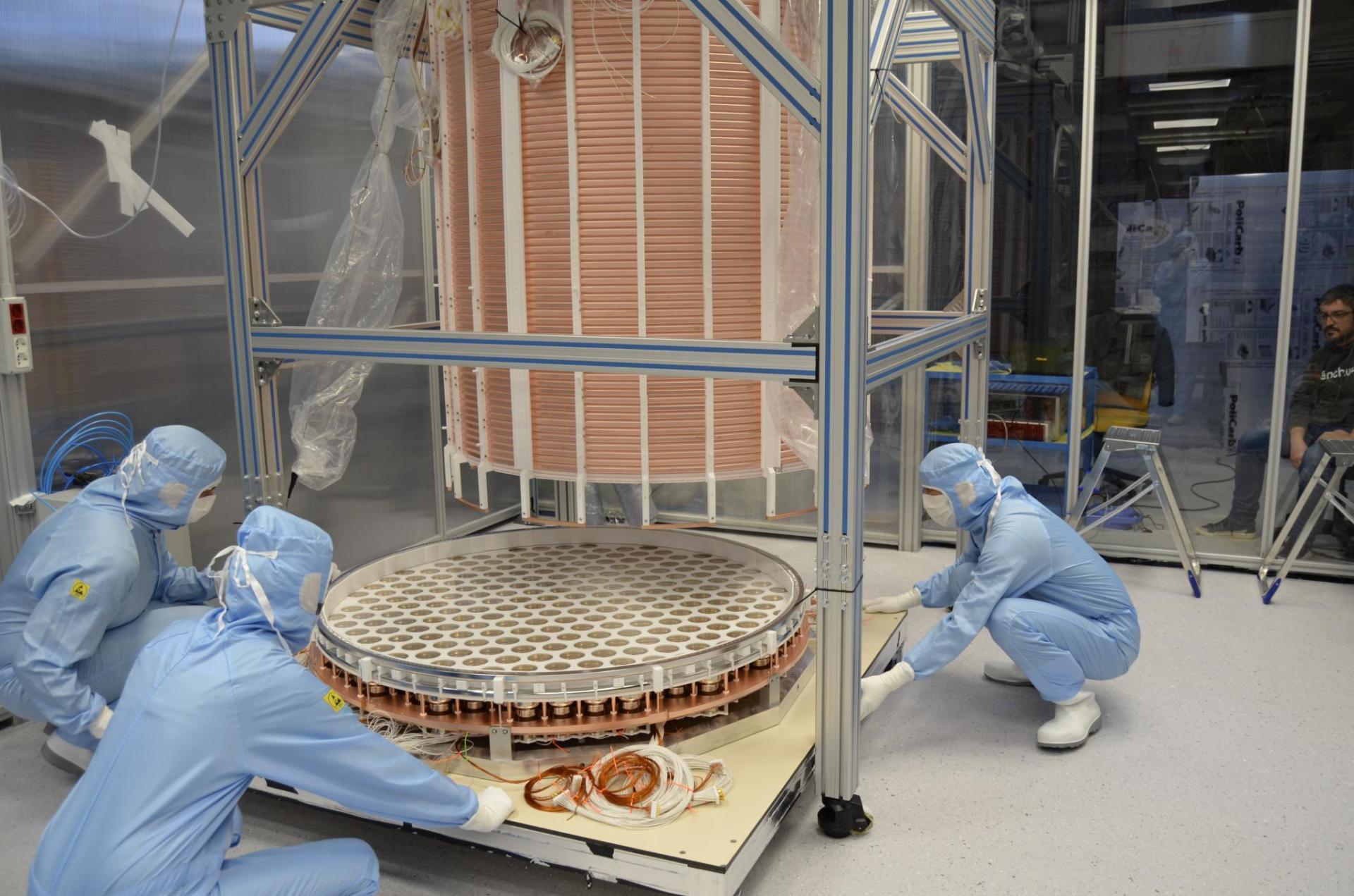
© XENON Collaboration; PMT bottom put in place
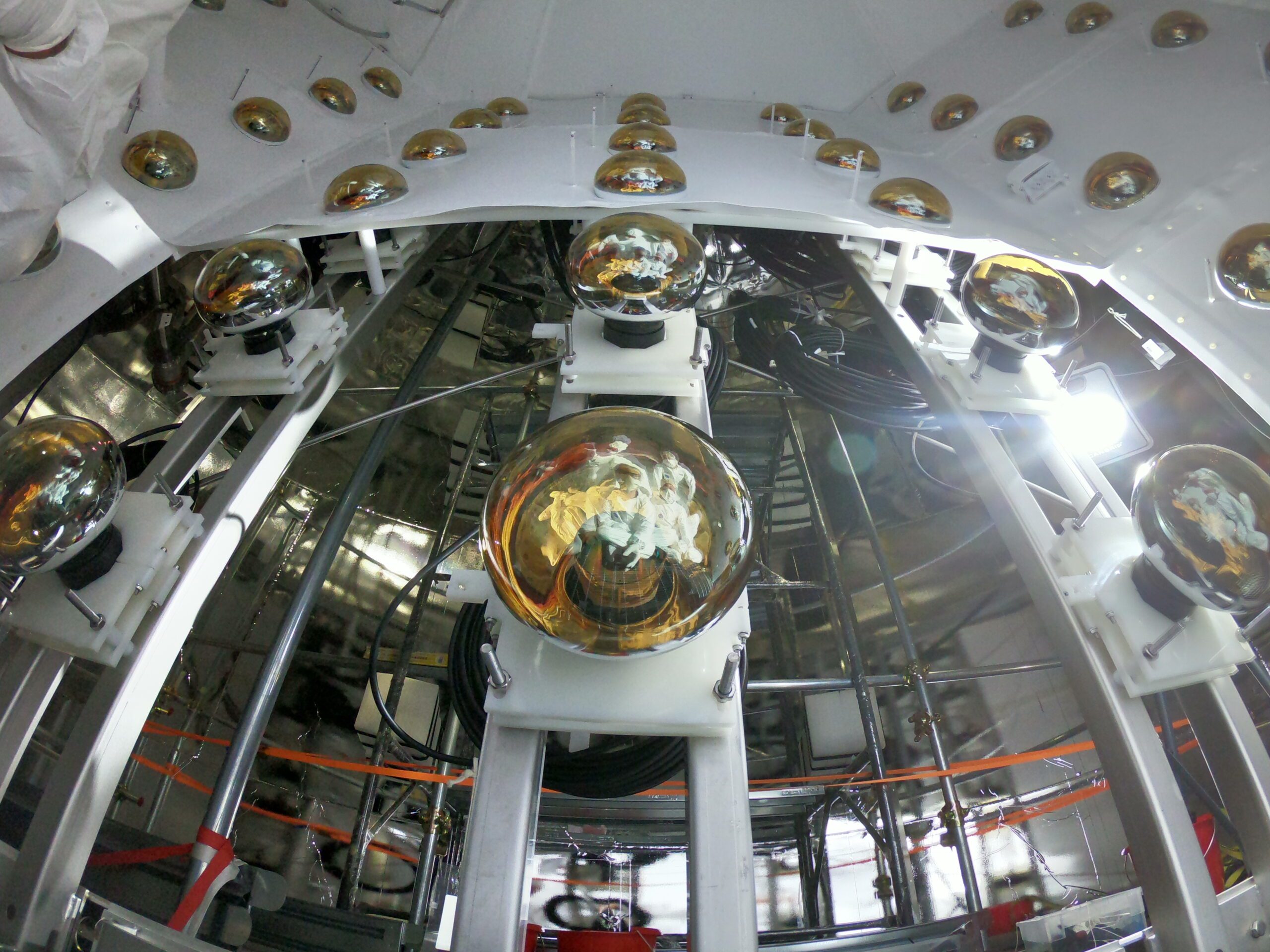
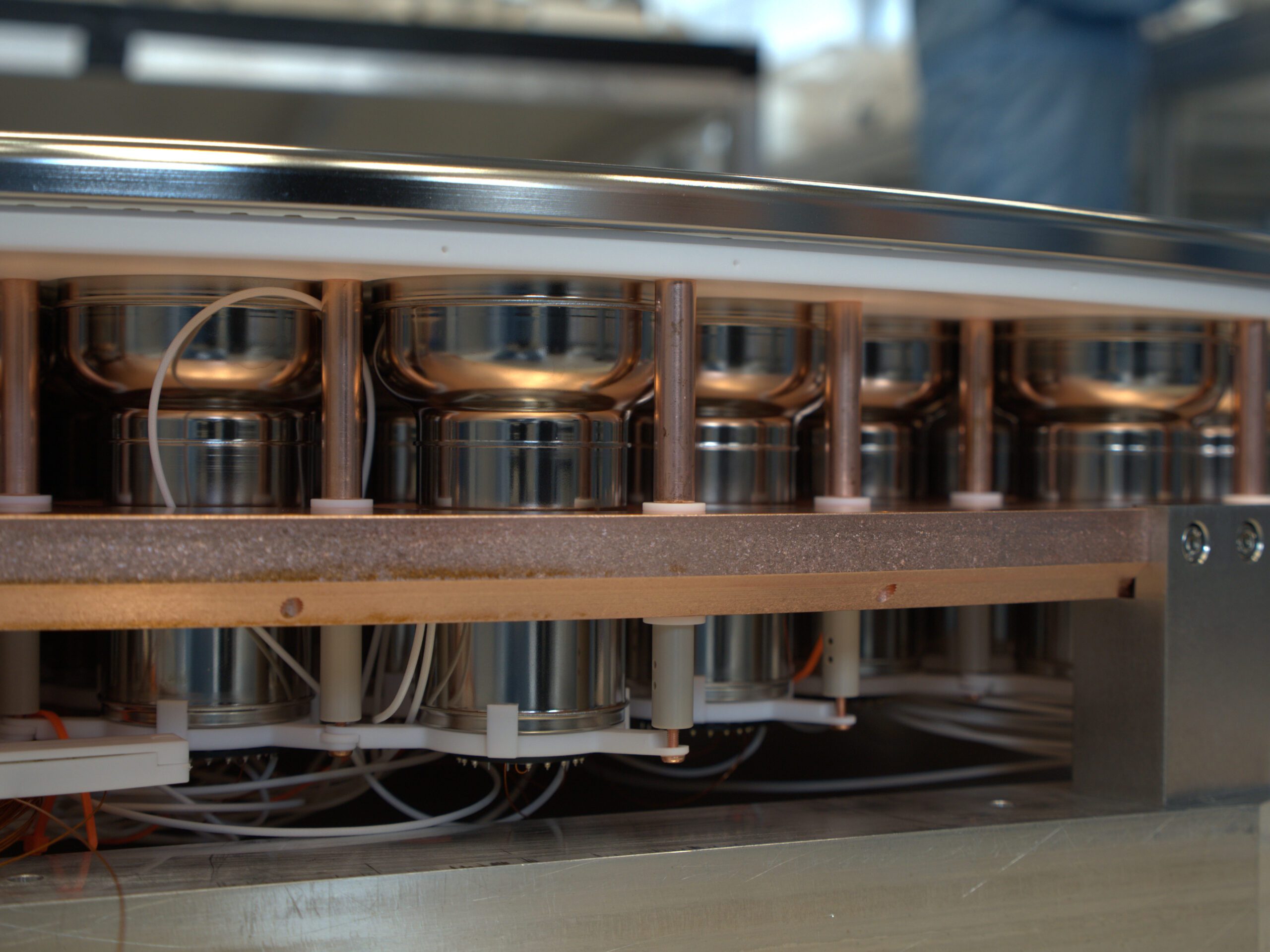
© XENON Collaboration; People in PMT-scaled
© XENON Collaboration; PMT arrays
Faced with harsh conditions
The experiment is located at the Gran Sasso National Laboratory (LNGS), about 120 km northeast of Rome in Italy, which is one of the largest underground laboratories in the world. To increase the chances of observing dark matter particle interactions, cosmic radiation must be drastically reduced. For this reason, the laboratory is under 1,400 m of rock.
Underground, the cylindrical-shaped TPC is filled with mostly liquid and a small layer of gas xenon on top, and two arrays of PMTs, one at the top of the experiment in the gaseous phase and one at the bottom of the liquid layer.
These PMTs are no ordinary models. The incredibly harsh environment requires extreme sensitivity and low intrinsic radioactivity from these photodetectors. Ideal for the observation of rare particle interactions, the temperatures in the TPC are extremely low (165 K or -108°C), making testing of PMTs by reproducing this exact environment quite challenging.
Although Hamamatsu had already provided cryogenic-type PMTs for similar experiments in the past, this challenge required the company to find a solution to provide the ideal sensitivity in harsh conditions without being able to test locally.
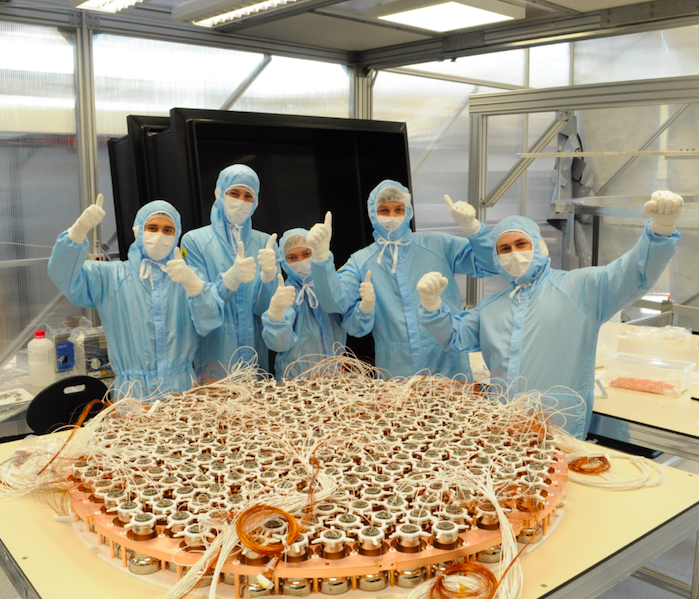
© XENON Collaboration; XENONnT PMT assembly
Practice makes perfect
It was through collaboration that Hamamatsu managed to advance its technology. The company transformed its technology to fit the exact requirements by engaging in high levels of communication with XENONnT researchers. From researchers across Europe to engineers in Japan, together, they built and tested the ideal PMT from one end of the world to another.
At first, some PMTs did not function as required due to the incredibly challenging environment. In fact, the experiment was so sensitive that even the tiniest amount of micro-light emission coming from the very material of the PMT was found to create noise. To suppress it, Hamamatsu engineers had to replace the materials and add mechanical barriers within the PMTs to ensure the removal of sparks.
The intrinsic radiation of PMTs was continuously improved over time. This was achieved by selecting components with the lowest radioactivity, thoroughly testing them before they were shared with the XENON team for approval, and finally incorporating them into the PMT base design.
For many years, both sides exchanged and improved, all while the experiment increased in size and in demand. Thanks to this continuous customer feedback on performance evaluation and screening tests, the dedicated PMT was considerably enhanced step-by-step and pushed to its technical limits.
Today, the XENON collaboration has published many papers dealing with its concepts, theoretical and observed backgrounds, and technical setups. The next - even bigger experiment - is already in discussion and the actions to generate an even greater performance are well underway. As each of these experiments grow, so does the technology to support it. This will continue until we are able to uncover together the mysteries behind our universe...
“I have been collaborating with Hamamatsu from the start of the XENON program and I am very pleased with our current sensors in XENONnT which allow us to observe single photons with high efficiency and very low levels of intrinsic radioactivity”. Laura Baudis, Prof. Dr. Laura Baudis (currently working for XENON and the future DARWIN)
Related products & information
Sign-up below to find out about the next story!
- Confirmation
-
It looks like you're in the . If this is not your location, please select the correct region or country below.
You're headed to Hamamatsu Photonics website for GB (English). If you want to view an other country's site, the optimized information will be provided by selecting options below.
In order to use this website comfortably, we use cookies. For cookie details please see our cookie policy.
- Cookie Policy
-
This website or its third-party tools use cookies, which are necessary to its functioning and required to achieve the purposes illustrated in this cookie policy. By closing the cookie warning banner, scrolling the page, clicking a link or continuing to browse otherwise, you agree to the use of cookies.
Hamamatsu uses cookies in order to enhance your experience on our website and ensure that our website functions.
You can visit this page at any time to learn more about cookies, get the most up to date information on how we use cookies and manage your cookie settings. We will not use cookies for any purpose other than the ones stated, but please note that we reserve the right to update our cookies.
1. What are cookies?
For modern websites to work according to visitor’s expectations, they need to collect certain basic information about visitors. To do this, a site will create small text files which are placed on visitor’s devices (computer or mobile) - these files are known as cookies when you access a website. Cookies are used in order to make websites function and work efficiently. Cookies are uniquely assigned to each visitor and can only be read by a web server in the domain that issued the cookie to the visitor. Cookies cannot be used to run programs or deliver viruses to a visitor’s device.
Cookies do various jobs which make the visitor’s experience of the internet much smoother and more interactive. For instance, cookies are used to remember the visitor’s preferences on sites they visit often, to remember language preference and to help navigate between pages more efficiently. Much, though not all, of the data collected is anonymous, though some of it is designed to detect browsing patterns and approximate geographical location to improve the visitor experience.
Certain type of cookies may require the data subject’s consent before storing them on the computer.
2. What are the different types of cookies?
This website uses two types of cookies:
- First party cookies. For our website, the first party cookies are controlled and maintained by Hamamatsu. No other parties have access to these cookies.
- Third party cookies. These cookies are implemented by organizations outside Hamamatsu. We do not have access to the data in these cookies, but we use these cookies to improve the overall website experience.
3. How do we use cookies?
This website uses cookies for following purposes:
- Certain cookies are necessary for our website to function. These are strictly necessary cookies and are required to enable website access, support navigation or provide relevant content. These cookies direct you to the correct region or country, and support security and ecommerce. Strictly necessary cookies also enforce your privacy preferences. Without these strictly necessary cookies, much of our website will not function.
- Analytics cookies are used to track website usage. This data enables us to improve our website usability, performance and website administration. In our analytics cookies, we do not store any personal identifying information.
- Functionality cookies. These are used to recognize you when you return to our website. This enables us to personalize our content for you, greet you by name and remember your preferences (for example, your choice of language or region).
- These cookies record your visit to our website, the pages you have visited and the links you have followed. We will use this information to make our website and the advertising displayed on it more relevant to your interests. We may also share this information with third parties for this purpose.
Cookies help us help you. Through the use of cookies, we learn what is important to our visitors and we develop and enhance website content and functionality to support your experience. Much of our website can be accessed if cookies are disabled, however certain website functions may not work. And, we believe your current and future visits will be enhanced if cookies are enabled.
4. Which cookies do we use?
There are two ways to manage cookie preferences.
- You can set your cookie preferences on your device or in your browser.
- You can set your cookie preferences at the website level.
If you don’t want to receive cookies, you can modify your browser so that it notifies you when cookies are sent to it or you can refuse cookies altogether. You can also delete cookies that have already been set.
If you wish to restrict or block web browser cookies which are set on your device then you can do this through your browser settings; the Help function within your browser should tell you how. Alternatively, you may wish to visit www.aboutcookies.org, which contains comprehensive information on how to do this on a wide variety of desktop browsers.
5. What are Internet tags and how do we use them with cookies?
Occasionally, we may use internet tags (also known as action tags, single-pixel GIFs, clear GIFs, invisible GIFs and 1-by-1 GIFs) at this site and may deploy these tags/cookies through a third-party advertising partner or a web analytical service partner which may be located and store the respective information (including your IP-address) in a foreign country. These tags/cookies are placed on both online advertisements that bring users to this site and on different pages of this site. We use this technology to measure the visitors' responses to our sites and the effectiveness of our advertising campaigns (including how many times a page is opened and which information is consulted) as well as to evaluate your use of this website. The third-party partner or the web analytical service partner may be able to collect data about visitors to our and other sites because of these internet tags/cookies, may compose reports regarding the website’s activity for us and may provide further services which are related to the use of the website and the internet. They may provide such information to other parties if there is a legal requirement that they do so, or if they hire the other parties to process information on their behalf.
If you would like more information about web tags and cookies associated with on-line advertising or to opt-out of third-party collection of this information, please visit the Network Advertising Initiative website http://www.networkadvertising.org.
6. Analytics and Advertisement Cookies
We use third-party cookies (such as Google Analytics) to track visitors on our website, to get reports about how visitors use the website and to inform, optimize and serve ads based on someone's past visits to our website.
You may opt-out of Google Analytics cookies by the websites provided by Google:
https://tools.google.com/dlpage/gaoptout?hl=en
As provided in this Privacy Policy (Article 5), you can learn more about opt-out cookies by the website provided by Network Advertising Initiative:
http://www.networkadvertising.org
We inform you that in such case you will not be able to wholly use all functions of our website.
Close


